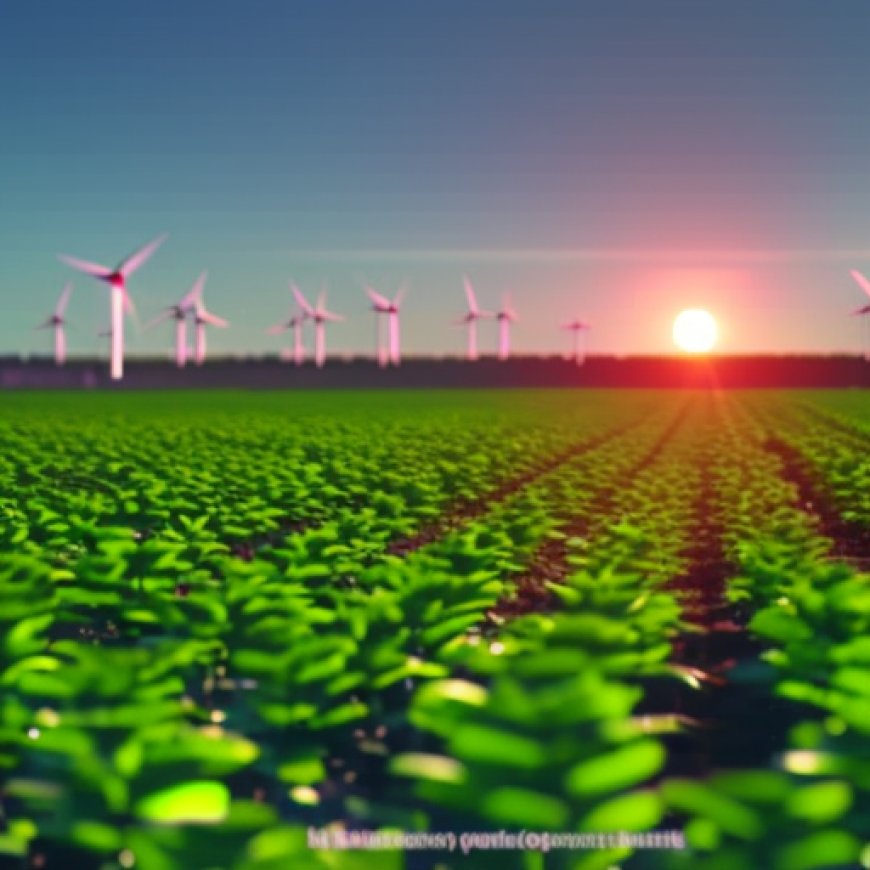Researchers discover potential of chicken fat as clean energy storage alternative: ‘Advancing the quest for more eco-friendly energy solutions’


South Korean Experts Harness Chicken Fat for Sustainable Energy Storage
Researchers from Yeungnam University in South Korea have made a groundbreaking discovery in the field of sustainable energy storage. They have successfully used chicken fat, combined with gas flame pistols, to power LEDs. This innovative work has the potential to revolutionize energy storage devices and contribute to the achievement of the Sustainable Development Goals (SDGs).
Supercapacitors and their Role in Sustainable Energy Storage
Supercapacitors are energy storage devices that have a longer lifespan compared to traditional batteries. However, they typically have lower storage capacity. Despite this limitation, supercapacitors are gaining attention for their potential use in electric vehicles and grid banks. Ongoing research aims to enhance the capabilities of supercapacitors and explore their integration into wearable technology.
The Use of Chicken Fat as an Environmentally Friendly Electrode Material
The Yeungnam team has developed a new electrode material for supercapacitors using chicken fat oil derived from food waste. The researchers reported that this material is environmentally friendly and could significantly reduce the cost of energy storage devices. In addition, the chicken fat electrode demonstrated excellent capacitance, durability, and high energy and power density.
Advantages and Implications for Sustainable Development
- The chicken fat electrode held 97% of its capacity during 5,000 cycles, showcasing its long lifespan.
- This electrode could serve as a lower-cost alternative to expensive materials like graphene, which contribute to air pollution during production.
- By enabling reliable energy storage, this innovation supports the transition to renewable power sources and the achievement of SDG 7 (Affordable and Clean Energy).
- Efficient energy storage facilitates the expansion of community solar programs, allowing homeowners to save on energy bills and reduce planet-warming air pollution. This aligns with SDG 13 (Climate Action) and SDG 11 (Sustainable Cities and Communities).
Future Implications and Conclusion
The successful demonstration of the chicken fat supercapacitor powering colored LEDs highlights the potential benefits of utilizing food waste as a carbon source for eco-friendly energy solutions. This breakthrough discovery contributes to the ongoing efforts in advancing sustainable development and achieving the SDGs.
SDGs, Targets, and Indicators Analysis
1. Which SDGs are addressed or connected to the issues highlighted in the article?
- SDG 7: Affordable and Clean Energy
- SDG 9: Industry, Innovation, and Infrastructure
- SDG 12: Responsible Consumption and Production
The article discusses the development of a new electrode material for supercapacitors using chicken fat oil from food waste. This innovation contributes to the goals of affordable and clean energy (SDG 7) by providing a more environmentally friendly and potentially lower-cost energy storage solution. It also aligns with the goal of industry, innovation, and infrastructure (SDG 9) by advancing the quest for more eco-friendly energy solutions. Additionally, the use of food waste as a carbon source supports responsible consumption and production (SDG 12) by reducing waste and utilizing resources efficiently.
2. What specific targets under those SDGs can be identified based on the article’s content?
- SDG 7.2: Increase substantially the share of renewable energy in the global energy mix
- SDG 9.4: Upgrade infrastructure and retrofit industries to make them sustainable
- SDG 12.5: Substantially reduce waste generation through prevention, reduction, recycling, and reuse
The development of a chicken fat-based electrode material for supercapacitors contributes to the target of increasing the share of renewable energy in the global energy mix (SDG 7.2). It also aligns with the target of upgrading infrastructure and retrofitting industries to make them sustainable (SDG 9.4) by providing a more environmentally friendly and cost-effective energy storage solution. Additionally, the use of food waste as a carbon source supports the target of substantially reducing waste generation through prevention, reduction, recycling, and reuse (SDG 12.5).
3. Are there any indicators mentioned or implied in the article that can be used to measure progress towards the identified targets?
- Capacity retention during cycles: The article mentions that the chicken fat-based electrode held 97% of its capacity during 5,000 cycles. This indicates the durability and performance of the electrode material, which can be used as an indicator of progress towards the targets of renewable energy (SDG 7.2) and sustainable infrastructure (SDG 9.4).
- Reduction in air pollution: The article states that the chicken fat electrode could be a lower-cost alternative to materials that result in air pollution when harvested. This implies that the use of chicken fat as a carbon source could contribute to reducing air pollution, which can be used as an indicator of progress towards the target of waste reduction and responsible consumption (SDG 12.5).
These indicators can be used to measure the progress towards the identified targets by assessing the performance and environmental impact of the chicken fat-based electrode material.
4. Table: SDGs, Targets, and Indicators
| SDGs | Targets | Indicators |
|---|---|---|
| SDG 7: Affordable and Clean Energy | 7.2: Increase substantially the share of renewable energy in the global energy mix | Capacity retention during cycles |
| SDG 9: Industry, Innovation, and Infrastructure | 9.4: Upgrade infrastructure and retrofit industries to make them sustainable | Capacity retention during cycles |
| SDG 12: Responsible Consumption and Production | 12.5: Substantially reduce waste generation through prevention, reduction, recycling, and reuse | Reduction in air pollution |
Copyright: Dive into this article, curated with care by SDG Investors Inc. Our advanced AI technology searches through vast amounts of data to spotlight how we are all moving forward with the Sustainable Development Goals. While we own the rights to this content, we invite you to share it to help spread knowledge and spark action on the SDGs.
Fuente: thecooldown.com

Join us, as fellow seekers of change, on a transformative journey at https://sdgtalks.ai/welcome, where you can become a member and actively contribute to shaping a brighter future.







